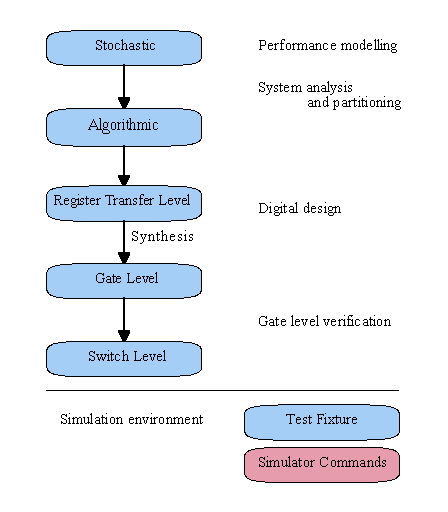Verilog descriptions can span multiple levels of abstraction i.e. levels of detail, and can be used for different purposes at various stages in the design process.

At the highest level, Verilog contains stochastical functions (queues and random probability distributions) to support performance modelling.
Verilog supports abstract behavioural modeling, so can be used to model the functionality of a system at a high level of abstraction. This is useful at the system analysis and partitioning stage.
Verilog supports Register Transfer Level descriptions, which are used for the detailed design of digital circuits. Synthesis tools transform RTL descriptions to gate level.
Verilog supports gate and switch level descriptions, used for the verification of digital designs, including gate and switch level logic simulation, static and dynamic timing analysis, testability analysis and fault grading.
Verilog is used to describe simulation environments; test vectors, expected results, results comparison and analysis.
Verilog can be used to control simulation e.g. setting breakpoints, taking checkpoints, restarting from time 0, tracing waveforms. However, most of these functions are not included in the 1364 standard, but are proprietary to particular simulators.
![]() Verilog
FAQ
Verilog
FAQ
![]() Doulos Training Courses
Doulos Training Courses
![]() Return to
Hardware Designers Guide Contents
Return to
Hardware Designers Guide Contents
Copyright 1995-1997 Doulos
This page was last updated 12th December 1996.
![]() We welcome your e-mail comments. Please contact us at: webmaster@doulos.co.uk
We welcome your e-mail comments. Please contact us at: webmaster@doulos.co.uk